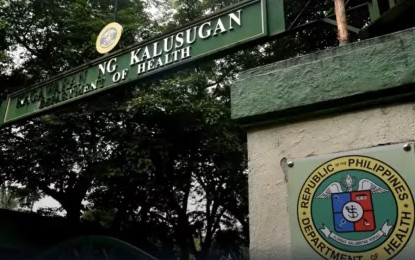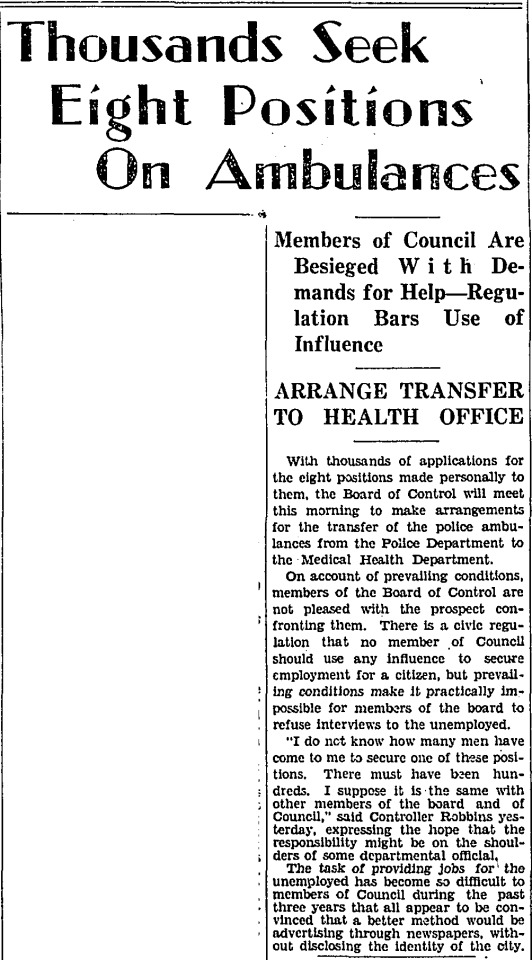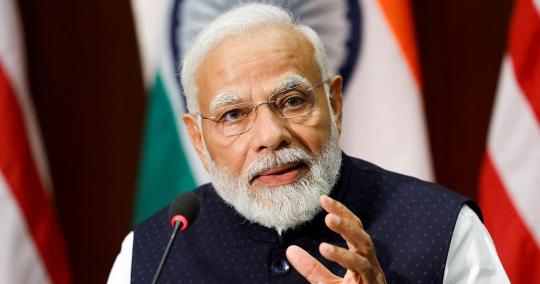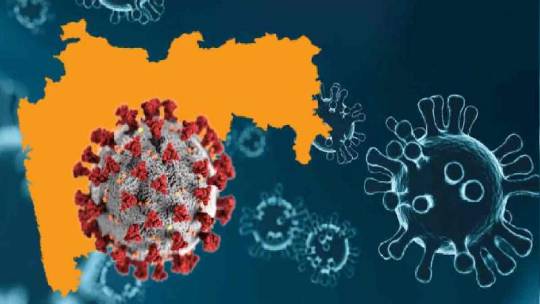#Health Department
Text
I have seen a lot of info about things that libraries provide, and may I add: health departments!
I honestly had no idea until I started working at one, but they are so much more than inspections and disease investigation!
You need primary care? A lot of them have clinics that take insturance and/or do sliding scale payment
You need a dentist? A lot of them also offer dental services too
Have a kid? Car seat installation, childhood vaccines, WIC, support for paying for childhood healthcare, breastfeeding support, newborn and early intervention home visits, safety town days, and healthy eating classes for kids. Some even do free books, toys, even coats and car seats!
Have a house? Carbon monoxide and smoke detector checks (or get them for free), lead testing, radon testing
Are you a human? Healthy eating/cooking classes, chronic illness support groups, bereavement support groups, access to social workers to access programs outside of the department, communicable disease reporting, mosquito abatement, monitoring and investigation of outbreaks, monitoring of food and healthcare providers, community programs, smoking and vaping cessation, emergency preparedness, adult and travel immunization/prevention, health site services, HIV testing, birth and death records, general health information, and so much more!
Also it’s free or super low cost.
48 notes
·
View notes
Text
#fuck american healthcare#us healthcare#fuck health insurance#american health insurance#health insurance#american health system#american healthcare#health wellness#health equity#health rant#health tag#health usa#usa health#health issues#health and wellness#health and safety#health department#health disparities#health facilities#health human#health care#health cw#health concerns#health benefits#health management#health mention#i love polls#polls#tumblr polls#my polls
11 notes
·
View notes
Text

A cockroach on this restaurants public health score.
#interesting#interesting facts#nature is everything#nature is weird#nature#discover#thats interesting#thats insane#thats incredible#animals#cockroaches#cockroach pest control#team cockroach#public health#health#health department#health inspectors#health inspector#woah#like woah#woahhhh#woah dude#woah :0#but woah#woah woah woah#woahg#thats crazy#what the#what the heck#irony
6 notes
·
View notes
Text
Philippines Health Department received emergency operations equipment from EU and WHO
The Department of Health (DOH) received Emergency Operation Centre (EOC) Information and Communications Technology (ICT) equipment worth a total of 4.8 million Philippine pesos (Php) from the European Union (EU) and the World Health Organisation (WHO), according to the EU’s official website.
It is expected that the Health Department will now be able to provide an effective and timely response to public health emergencies or natural disasters, and will also be able to provide uninterrupted medical services in times of crises.
Christoph Wagner, Head of Cooperation at the EU Delegation to the Philippines, stated:
“The European Union has been a steadfast ally of the Philippines both in tackling disasters with humanitarian aid, and also by supporting national and local authorities’ work on disaster preparedness for many years now. In particular, since 2020, health emergencies have become a very real threat. The EU is therefore proud to be supporting the Department of Health to secure its communication and coordination capabilities during major crises. This will protect lives.”
Read more HERE

#world news#world politics#news#phillipines#health department#european news#european union#eu politics#eu news#world health organization#emergency#public health#healthcare#health and wellness#wellness#medicine#health
0 notes
Text

"Thousands Seek Eight Positions On Ambulances," Toronto Globe. August 15, 1933. Page 9.
---
Members of Council Are Besieged With Demands for Help -Regulation Bars Use of Influence
----
ARRANGE TRANSFER TO HEALTH OFFICE
---
With thousands of applications for the eight positions made personally to them, the Board of Control will meet this morning to make arrangements for the transfer of the police ambulances from the Police Department to the Medical Health Department.
On account of prevailing conditions, members of the Board of Control are not pleased with the prospect con- fronting them. There is a civic regulation that no member of Council should use any influence to secure employment for a citizen, but prevailing conditions make it practically impossible for members of the board to refuse interviews to the unemployed.
"I do not know how many men have come to me to secure one of these positions. There must have been hundreds. I suppose it is the same with other members of the board and of Council," said Controller Robbins yesterday, expressing the hope that the responsibility might be on the shoulders of some departmental official.
The task of providing jobs for the unemployed has become so difficult to members of Council during the past three years that all appear to be convinced that a better method would be advertising through newspapers, without disclosing the identity of the city.
#toronto#jobseekers#unemployment#unemployed workers#health department#job vacancies#police ambulance#emergency services#great depression in canada#pressures of the great depression#municipal workers
0 notes
Text
How to Protect Patient Privacy When Launching a New Healthcare Data Project
Patient health data is an invaluable resource for healthcare organizations: it can be used to improve treatment pathways, manage demand and capacity, and raise safety standards and much more. However, confusion and concerns around the safe and compliant use of patient data is preventing many of these benefits from being realized.

Introduction:
Health data expert Philip Russmeyer explains how to navigate the hurdles of patient data management, and how healthcare organizations can store, access and analyze patient data in the most secure way. This includes an explanation of: how to release valuable data from silos, the crucial differences between data anonymization and pseudonymization, and when, why and how each privacy-protecting process ought to be deployed.
If asked to rank the most valuable assets of a healthcare organization, most people would rank the staff, medical equipment, medications, or even the software highest on their list.
However, if we think about ‘value’ as ‘potential to save lives and improve multiple organizational outcomes at scale’, it’s the value of patient health data that stands out far ahead of all other assets. In Europe in 2023, every hospital and healthcare system stands to become a more efficient, more evidence-directed, and more effective patient care provider by better accessing, linking and deploying data resources in a secure and compliant manner. Despite this, many leaders are reluctant to improve their data utilization because the mountain appears too difficult and too dangerous to climb.
This is increasingly becoming a huge barrier to progress. Yes, large-scale data projects are a big undertaking, and can contain an element of risk, but there have also never been more options and technologies available to ensure privacy and deliver success. Today, as providers struggle with capacity and staff overutilisation, and in the future, as budgets become increasingly squeezed no health system can afford to ignore the benefits of data-driven decision making.
Data saves lives
As data access technologies, cryptographic algorithms and interoperable infrastructures improve in capability and sophistication, the ability of organizations to unlock the power of the data they hold about their patients - and unlock improved outcomes - is expanding at pace.
In March 2020, as European countries began their first pandemic lockdowns, the Randomised Evaluation of COVID-19 Therapy (RECOVERY) trial was launched in the UK. With the goal of identifying existing medications that could prove to be effective as COVID-19 treatments, researchers on this trial were given secure access to data from nearly 50,000 patients across 192 clinical venues. This wealth of real-time information was deployed by the researchers to recruit trial participants, allocate treatments, monitor outcomes and analyze results. After just 100 days, researchers were able to provide evidence that neither hydroxychloroquine nor Lopinavir/ritonavir were effective treatments. However, this evidence also showed that a different medication, dexamethasone, could reduce deaths by up to one third in hospitalized patients. This drug went on to save the lives of over one million COVID-19 patients around the world. Data was accessed during this period under so-called emergency “COPI notices” which temporarily suspended individuals’ rights to privacy, and as the pandemic has ended this practice has quite correctly been removed. However, similar insights can now be generated at the same scale and speed with leading-edge data access and privacy preservation technology without the risk of compromising individuals’ privacy. How? By anonymising at source, still linking across sources when required, and leaving all record-level data in its original setting whenever possible.
In 2022, at St George’s Hospital in London, an Inflammatory Bowel Disease (IBD) project launched in collaboration with FITFILE used this very technology to undertake analysis of the organization’s existing siloed IBD patient data to generate significant system efficiencies. This initiative showed that switching the biologics of 50% of patients could improve overall outcomes by 10%. It also showed that savings of around £2.5 million could be achieved from funding reallocation just for one subsection of patients in one hospital department – which, when grossed up for all patients across all departments could significantly improve that hospital trust’s financial standing and available resources for optimized patient care.
These are two excellent use-cases for the huge volume of patient data that every healthcare organization – from hospitals to primary and specialist care clinics to entire health systems - collects and stores on a daily basis.
Both the RECOVERY trial and the St George’s IBD project act as useful illustrations of how patient data can practically be leveraged in a high-impact manner: with other examples ranging from managing system capacity to identifying process efficiencies to designing new treatment pathways.
Gold-standard systems
Understandably, and encouragingly, national and independent healthcare organizations across Europe are now increasingly pursuing a vast array of projects to unlock and unite patient data.
If healthcare organizations wish to create and maintain systems that facilitate this leveraging of locked-up data, they must premise such systems on streamlined and highly secure, complete data access. This necessitates mass collaboration between stakeholders - patients, researchers, clinicians and administrators - and explicit data sharing agreements that are ultimately in the patients’ best interests.
Once a realistic roadmap has been put in place for the achievement of complete data access, the next step would be to establish safe and secure avenues along which data could be accessed and united.
However, this huge opportunity comes with huge risk and huge responsibility. Unless leaders acknowledge the sources of this risk and understand how to mitigate it, the full potential of patient data projects will remain unrealized.
Protecting patient privacy: the need-to-knows
Every institution that collects and stores private data is legally obligated to uphold the privacy of the individuals it belongs to. Data protection regulation mandates that, in Europe, patient data can only be used by healthcare and research organizations beyond direct patient care if the individuals concerned can never be re-identified. The only practical exceptions are if consent has been explicitly granted by the individual concerned, and/or the use case has been specially approved by authorities.
Recent interesting examples include DARWIN EU’s initial batch of studies using real-world data covering areas such as rare blood cancers and asthma. National databases on a variety of sources such as hospitals, primary care, health insurance, registries and biobanks were used to investigate aspects such as prevalence, safety and prescription patterns.
These studies show that patient data does not need to remain locked up until explicit consent is secured. However, they also highlight the need for sophisticated methods of privacy preservation when data is accessed and used.
In practice, this means that all identifying features must be removed from the data - so the information can never be linked back to a single individual. This is where the challenge lies. As noted, for instance, in the DARWIN Protocol C1-001, “patient visiting more than one provider are not cross identified for data protection reasons and therefore recorded as separate in the system”. This is just one example of the severe limits to insight generation if complete, accurate and consistent patient health profiles can’t be assembled at the record-level from numerous data points distributed across various sources such as electronic health records, pathology results and administrative databases. Until quite recently, it’s only been possible to bring together this data in (far less useful) aggregated or in identifiable form, which, as explained, violates privacy regulations.
Even if ‘tokenization’ is used - and the patient identity is replaced with a token - the reversible nature of the process means that the data can be re-identified, and subsequently the process does not fully protect privacy. The explicit consent or specific permission route must be pursued for every use of tokenized data.
Is anonymization the answer?
Importantly, recent advances in proven cryptography have opened the door to huge possibilities for safely uniting and using patient data.
Using new and unique processes, all identifiable information can be stripped from the data, rendering it safe for unification and the best option for preserving privacy. Once this total, irreversible anonymization has been carried out - ideally whilst the data remains in its source location - the data can now still be linked longitudinally and contemporaneously without requiring explicit patient consent.
For More Info : https://www.europeanhhm.com/articles/how-to-protect-patient-privacy-when-launching-a-new-healthcare-data-project
#healthcare#health and wellness#hospitals#health data#datasafety#dataprotection#health department#patientsafety#data privacy#privacy
0 notes
Text
राष्ट्रीय स्वास्थ्य चिंतन शिविर का दून में होगा आयोजन, केंद्रीय स्वास्थ्य मंत्री के साथ कई राज्यों के स्वास्थ्य मंत्री करेंगे शिरकत
देहरादून:- उत्तराखंड राज्य गठन के बाद पहली बार प्रदेश में स्वास्थ्य चिंतन शिविर का आयोजन होने जा रहा है। जुलाई महीने में आयोजित होने वाले तीन दिवसीय चिंतन शिविर में केंद्रीय स्वास्थ्य मंत्री के साथ ही कई राज्यों के स्वास्थ्य मंत्री शिरकत करेंगे। मुख्य रूप से इस चिंतन शिविर में स्वास्थ्य से जुड़े महत्वपूर्ण मुद्दों पर गहन मंथन किया जाएगा।
तय कार्यक्रम के अनुसार देहरादून में 14, 15 और 16 जुलाई यानी…

View On WordPress
#Atal Ayushman Yojana#Derhadun#health department#health minister dhan singh rawat#National Health Mission#news#NHM Director Dr R Rajesh Kumar#PM MODI#Swasthya Chintan Shivir#uttarakhand
0 notes
Photo

The Ministry of Health Department of Malawi recently completed an Excel and Project Management Course at Edoxi Training Institute. The training was led by our trainer Ms Neelu and organised by Mr Irfan Baig. Edoxi is proud to have been a part of your upskilling journey.
0 notes
Text
Admission to B.Sc. Nursing to be regulated by LBS
No Entrance Test: Admission to B.Sc. Nursing to be regulated by LBS
Are you a student looking to pursue a career in nursing? If yes, then here’s good news for you! The health department has announced that there is No Entrance Test for Admission to B.Sc. for nursing admission this year. Instead, the previous year’s admission method will continue.
The Health Department has informed the State…

View On WordPress
#Academic Standards#Admission#b.sc nursing#Entrance Exam#Future Impact#Government Seats.#Health Department#Indian Nursing Council#Management Seats#Regulation
0 notes
Text
नाशिकमध्ये पुन्हा कोरोना रुग्णांच्या संख्येत वाढ, आरोग्य विभाग अलर्ट मोडवर
नाशिक : कधीकाळी कोरोनाचा हॉटस्पॉट म्हणून ओळख असलेल्या नाशिक जिल्ह्यात आता कोरोना रुग्णांची संख्या वाढू लागली आहे. त्यामध्ये सर्वात महत्वाची बाब म्हणजे कोरोनाचा नवा विषाणू देशात प्रसारित होत आहे. त्यामुळे राज्य सरकारचा आरोग्य विभाग सतर्क झाला असून ठिकठिकाणी आढावा घेतला जात आहे. आरोग्य मंत्री डॉ. तानाजी सावंत यांनीही याबाबत सूचना दिल्या असून आरोग्य विभागाकडून त्याची अंमलबजावणी केली जात आहे. असे…

View On WordPress
0 notes
Text
Chicago's Health Department Does Little To Deter Repeat Polluters, Report Finds
0 notes
Text
Mykare is one of the leading full stack elective surgery platform providing minimally invasive elective and cosmetic surgeries. They will with you from beginning of consulting a doctor to surgery after care. We will provides you the best hernia surgeon chennai
They are having the following specialties:
Well- experienced doctors
Insurance Support
Affordable pricing
Post-surgery assistance
Free consultation and transportation
0 notes
Text
ನಮ್ಮ ಕ್ಲಿನಿಕ್ ಎಂದರೇನು? ಕರ್ನಾಟಕದಾದ್ಯಂತ ಇಂದಿನಿಂದ ಅಸ್ತಿತ್ವಕ್ಕೆ ಬರಲಿರುವ ಹೊಸ ಆರೋಗ್ಯ ಕೇಂದ್ರಗಳ ಬಗ್ಗೆ ಇಲ್ಲಿದೆ ಮಾಹಿತಿ
ನಮ್ಮ ಕ್ಲಿನಿಕ್ ಎಂದರೇನು? ಕರ್ನಾಟಕದಾದ್ಯಂತ ಇಂದಿನಿಂದ ಅಸ್ತಿತ್ವಕ್ಕೆ ಬರಲಿರುವ ಹೊಸ ಆರೋಗ್ಯ ಕೇಂದ್ರಗಳ ಬಗ್ಗೆ ಇಲ್ಲಿದೆ ಮಾಹಿತಿ
ಬೆಂಗಳೂರು: ನಗರಗಳಲ್ಲಿ ವಾಸವಿರುವ ಬಡವರಿಗೆ ನೆರವಾಗಲೆಂದು ಕರ್ನಾಟಕ ಸರ್ಕಾರದ ಆರೋಗ್ಯ ಇಲಾಖೆಯು ರಾಜ್ಯದಾದ್ಯಂತ ರೂಪಿಸಿರುವ 114 ‘ನಮ್ಮ ಕ್ಲಿನಿಕ್’ಗಳು (Namma Clinic) ಇಂದಿನಿಂದ (ಡಿ 14) ಕಾರ್ಯಾರಂಭ ಮಾಡಲಿವೆ. ನಗರದಲ್ಲಿ ನಡೆದ ಮಾಧ್ಯಮಗೋಷ್ಠಿಯಲ್ಲಿ ಈ ಸಂಬಂಧ ಮಾಹಿತಿ ನೀಡಿದ್ದ ಆರೋಗ್ಯ ಸಚಿವ ಡಾ ಕೆ ಸುಧಾಕರ (Dr K Sudhakar), ‘ಮುಖ್ಯಮಂತ್ರಿ ಬಸವರಾಜ ಬೊಮ್ಮಾಯಿ ಅವರು ನಮ್ಮ ಕ್ಲಿನಿಕ್ಗಳಿಗೆ ಚಾಲನೆ ನೀಡಲಿದ್ದಾರೆ. ರಾಜ್ಯದಲ್ಲಿ ಒಟ್ಟು 114 ನಮ್ಮ ಕ್ಲಿನಿಕ್ಗಳು ಏಕಕಾಲಕ್ಕೆ…

View On WordPress
0 notes
Text
UP News: यूपी के इस जिले में एड्स बना खतरा, तेजी से बढ़ रही है मरीजों की संख्या
UP News: यूपी के इस जिले में एड्स बना खतरा, तेजी से बढ़ रही है मरीजों की संख्या
देवरिया: जिले में स्वास्थ्य महकमें की चौकसी के बाद भी एड्स के मरीजों की संख्या में कमी नहीं आ रही है। इस बीमारी की रोकथाम और इसके प्रति लोगों को जागरूक करने के लिए शिविर लग���कर अभियान चलाए जा रहे हैं। जिसमें काफी रकम भी खर्च हो रही है। इसके बाद भी एड्स के मरीजों की संख्या घटने की बजाय साल दर साल बढ़ रही है। देवरिया जिले में पिछले वर्ष 284 के रोगी पाए गए थे, लेकिन इस वर्ष यह संख्या बढ़कर 313 हो गई।…
View On WordPress
#aids day#aids news#deoria news#Health Department#HIV news#Latest uttar pradesh News#today&039;s latest news#up news#uttar pradesh Headlines#Uttar Pradesh news#uttar pradesh news in hindi#आज की ताजा खबरें#उत्तर प्रदेश Samachar#एड्स दिवस#देवरिया समाचार
0 notes
Photo

Haeresis
#own art#own characters#CanisAlbus#Machete#art#artists on tumblr#anthro#sighthound#dogs#canine#animals#sorry it's all machete right now#this year has been very slow and uneventful in the art department#haven't gotten much of anything done#maybe it's mental health maybe it's artblock#finally feeling like drawing again and oc stuff is always funniest to make#trying to get back in the groove bear with me
4K notes
·
View notes